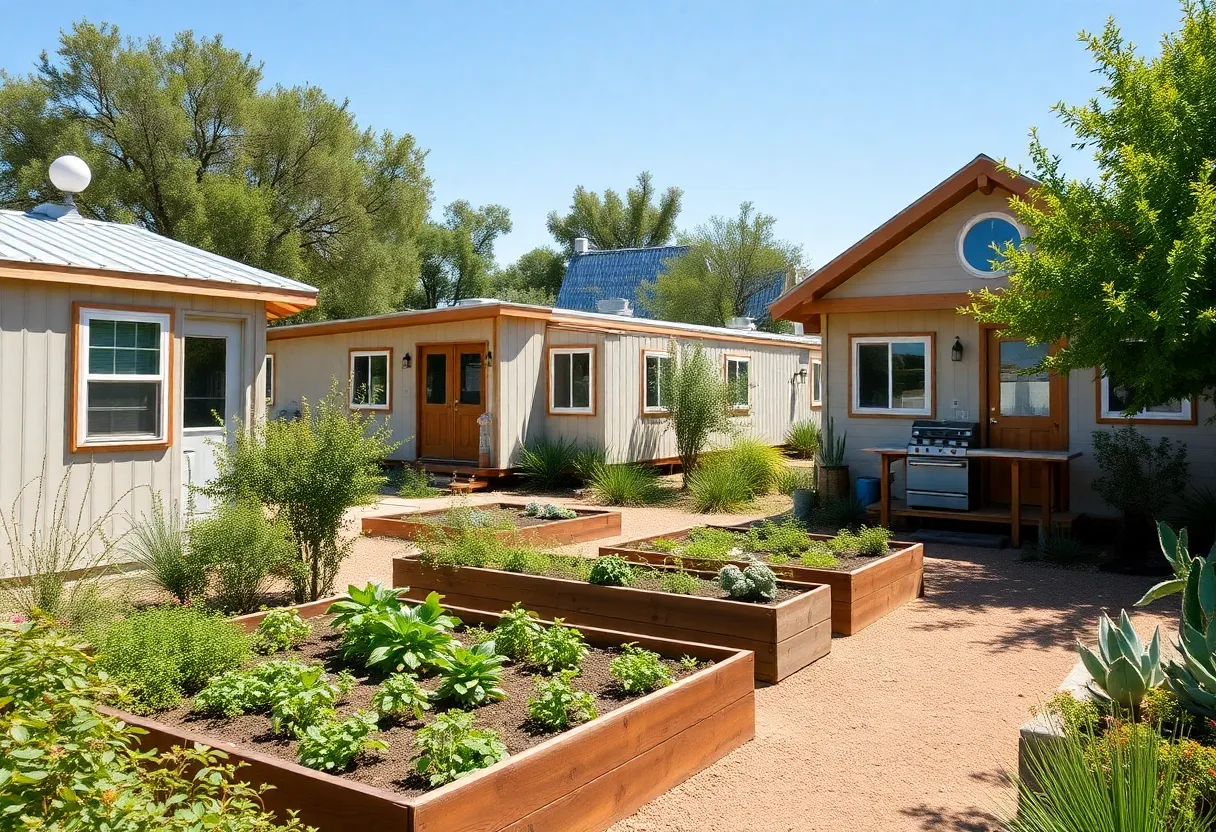News Summary
Tucson is set to launch a new tiny home village aimed at mitigating homelessness amidst escalating housing costs. Spearheaded by The Homing Project, this initiative will provide transitional housing with essential support services for residents. The project features ten prefabricated shelters and aims to promote self-sufficiency. As the city grapples with rising homelessness rates, this forward-thinking solution could pave the way for similar developments across the region.
Tucson’s New Tiny Home Village Aims to Alleviate Homelessness Amid Rising Housing Costs
Tucson is on the verge of opening a new tiny home village designed to combat the growing issue of homelessness as the city faces an affordable housing crisis. This initiative, spearheaded by The Homing Project, aims to provide transitional housing for those in need. The first residents are expected to move into the village by late summer 2023, with the location near Grant Road and Stone Avenue for an initial period of two years before relocating to a permanent site in South Tucson.
The tiny home village will consist of ten prefabricated shelters, each measuring 64 square feet, all produced by Pallet, a company known for creating easy-to-assemble housing solutions. These homes can be constructed or dismantled in under an hour, making them an efficient option for temporary housing. The village is designed not only to provide shelter but also to facilitate the transition to permanent housing by including on-site services aimed at assisting residents with employment, housing searches, and mental health care.
Features of the Tiny Home Village
The Tucson tiny home village will feature a range of essential amenities to support its residents. This includes:
- Security personnel and site management.
- Professional social workers available to provide assistance with addiction treatment and mental health services.
- Two bathrooms and a communal kitchen area fashioned from a modified shipping container.
- Raised garden beds and a chicken coop to promote sustainable living.
Context of Homelessness in Tucson
This initiative arises from an alarming increase in homelessness rates in Tucson. The situation is not unique to Tucson; cities across the United States, including Los Angeles and Denver, have faced similar challenges and have turned to tiny home communities as a potential solution. In Arizona, both Tucson and Phoenix are making strides in the microhousing movement, ranking among the top cities for micro-housing stock. Tucson holds the No. 9 position nationally, while Phoenix ranks No. 16.
In Tucson, undersized apartment units account for approximately 7% of the overall rental stock, while Phoenix has a slightly lower percentage at 4.8%. The organization StorageCafe conducted an analysis revealing these statistics, emphasizing the potential for microhousing as a remedy for housing shortages.
Regional Comparison
While Tucson is advancing its tiny home initiative, Phoenix is also seeking to expand its shelter options. The city has announced plans to add 790 new shelter beds and extend library hours for overnight respite during the intense summer heat. Currently, Phoenix does not plan to introduce a tiny home community like Tucson’s; the closest alternative is the XWing modular shelter unit at the Washington Relief Shelter, which houses up to 20 individuals in private rooms within four converted shipping containers.
Industry experts, including Pallet’s CEO, have highlighted that Phoenix could benefit from tiny home villages, suggesting a growing demand in the market for such interim housing solutions. Meanwhile, Glendale, Arizona, is moving forward with plans to construct a tiny home community for veterans and their families, set to be completed by 2026. This project is backed by $3 million in funding from the Maricopa County Board of Supervisors.
Conclusion
The Tucson tiny home village represents a proactive effort to address the pressing issue of homelessness amid soaring housing costs. As Tucson takes the lead in implementing this model, many are watching closely to see its potential impact on the local community and how it may pave the way for similar projects across the region and beyond. The successful execution of such transitional housing solutions could inspire further initiatives aimed at fostering self-sufficiency and providing stable housing for vulnerable populations.
Deeper Dive: News & Info About This Topic
HERE Resources
Additional Resources
- AZ Central: Tucson’s Tiny Home Village
- ABC15: Microhomes Gain Traction in Phoenix
- KTAR: Glendale Tiny Homes for Veterans
- Google Search: Tiny Homes Community
- Encyclopedia Britannica: Tiny Homes

Author: STAFF HERE PHOENIX WRITER
The PHOENIX STAFF WRITER represents the experienced team at HEREPhoenix.com, your go-to source for actionable local news and information in Phoenix, Maricopa County, and beyond. Specializing in "news you can use," we cover essential topics like product reviews for personal and business needs, local business directories, politics, real estate trends, neighborhood insights, and state news affecting the area—with deep expertise drawn from years of dedicated reporting and strong community input, including local press releases and business updates. We deliver top reporting on high-value events such as the Waste Management Phoenix Open, Cactus League Spring Training, and Arizona State Fair. Our coverage extends to key organizations like the Greater Phoenix Chamber of Commerce and Visit Phoenix, plus leading businesses in technology and healthcare that power the local economy such as Intel and Banner Health. As part of the broader HERE network, including HERETucson.com, we provide comprehensive, credible insights into Arizona's dynamic landscape.






